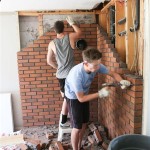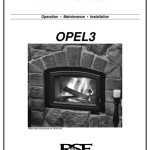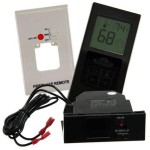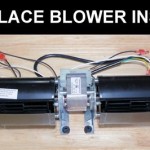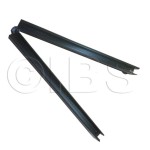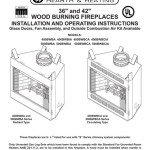Englander Fireplace Insert Parts: A Comprehensive Guide
Englander fireplace inserts are heating appliances designed to be installed within existing fireplaces, offering an efficient and aesthetically pleasing alternative to traditional open hearths. These inserts require regular maintenance and occasional repairs to ensure optimal performance and safety. Understanding the various Englander fireplace insert parts, their function, and common issues is crucial for homeowners seeking to maintain or repair their units.
Understanding the Core Components
The functionality of an Englander fireplace insert relies on a complex interplay of various parts. These components work in concert to efficiently burn fuel - typically wood or pellets - and distribute heat throughout the home. Identifying and understanding these core parts is the first step in troubleshooting issues or performing necessary maintenance.
The firebox is the heart of the insert, where the combustion process occurs. It is typically constructed from heavy-gauge steel or cast iron to withstand the intense heat. Within the firebox, grates or burn pots hold the fuel, allowing for proper airflow. Baffles, located near the top of the firebox, help to redirect the hot gases, increasing their residence time within the firebox and promoting more complete combustion. This leads to greater efficiency and reduced emissions.
Air intake systems are critical for providing the oxygen needed for combustion. Some inserts have primary air intakes, which supply air to the firebox directly. Others have secondary air intakes, which introduce preheated air into the upper part of the firebox to burn off any remaining gases. These secondary air systems are often responsible for the clean-burning characteristics of modern fireplace inserts. An air wash system is frequently included, directing a stream of air across the glass door to keep it clear of soot and creosote buildup.
Heat exchangers extract heat from the hot exhaust gases and transfer it to the surrounding air. These are typically located above the firebox and consist of a series of tubes or channels. A blower fan then circulates air through the heat exchanger, distributing the warmed air into the room. The blower is essential for maximizing the heating output of the insert.
The venting system is responsible for safely exhausting combustion byproducts, such as smoke and carbon monoxide, out of the home. It typically consists of a stainless steel liner that runs from the insert to the top of the chimney. Proper venting is crucial for preventing carbon monoxide poisoning and ensuring efficient operation of the insert.
Control systems vary depending on the type of insert. Wood-burning inserts may have simple air controls to regulate the combustion rate. Pellet inserts, on the other hand, typically have more sophisticated electronic controls that manage the fuel feed rate, air supply, and blower speed. These controls allow for precise temperature regulation and automated operation.
Common Replacement Parts and Their Functions
Due to the demanding operating conditions within a fireplace insert, certain parts are more prone to wear and tear than others. Recognizing these common replacement parts and their functions is essential for maintaining the unit's performance and longevity.
Gaskets play a crucial role in sealing various components of the insert, preventing air leaks and ensuring efficient combustion. Door gaskets seal the firebox door, preventing smoke from escaping into the room. Glass gaskets seal the glass door to the firebox, preventing air leaks around the glass. Baffle gaskets seal around the baffles, preventing air from bypassing the heat exchangers. Over time, these gaskets can become brittle, cracked, or compressed, leading to air leaks and reduced efficiency. Regular inspection and replacement of gaskets are crucial for maintaining optimal performance.
Blower fans are responsible for circulating air through the heat exchanger and distributing heat into the room. These fans can fail due to motor burnout, bearing wear, or debris accumulation. A malfunctioning blower fan will significantly reduce the heating output of the insert and may cause the unit to overheat. Replacement blower fans are readily available and are typically specified by their airflow capacity (CFM - cubic feet per minute) and voltage.
Igniters are used in pellet inserts to automatically ignite the fuel. These igniters consist of a heating element that heats up the pellets until they ignite. Over time, igniters can burn out due to repeated use and exposure to high temperatures. A failing igniter will prevent the insert from starting automatically. Replacement igniters are typically specified by their wattage and voltage.
Thermostats are used to regulate the temperature of the insert. In wood-burning inserts, a bimetallic thermostat may be used to control the damper or air intake. In pellet inserts, an electronic thermostat is used to control the fuel feed rate and blower speed. A malfunctioning thermostat can cause the insert to overheat or fail to maintain the desired temperature. Replacement thermostats are typically specified by their temperature range and voltage.
Burn pots or grates, located within the firebox, hold the fuel and allow for proper airflow. These components are exposed to intense heat and can eventually warp, crack, or corrode. A damaged burn pot or grate will affect the combustion efficiency and may lead to fuel spillage. Replacement burn pots and grates are typically made from cast iron or stainless steel for durability.
Glass doors provide a view of the fire and help to contain the combustion process. Accidental impacts or extreme temperature fluctuations can cause the glass to crack or shatter. While tempered glass designed for high temperatures is used, it is still subject to damage. Replacement glass doors are available and are typically specified by their dimensions and the model of the insert.
Circuit boards and control panels are the brains of pellet inserts, managing the various functions of the unit. These electronic components can fail due to power surges, overheating, or component failure. A malfunctioning circuit board or control panel can cause a variety of problems, including failure to start, erratic operation, or error code displays. Replacement circuit boards and control panels are typically specific to the model of the insert.
Troubleshooting Common Issues and Part Identification
Diagnosing problems with an Englander fireplace insert often requires identifying the affected part. Several common issues can arise, and pinpointing the source of the problem is essential for effective repair.
If the insert is producing excessive smoke, several factors could be at play. First, the venting system should be inspected for obstructions, such as creosote buildup or debris. A blocked vent will restrict airflow and cause smoke to back up into the room. Second, the air intakes should be checked to ensure they are not blocked. Insufficient air supply will lead to incomplete combustion and increased smoke production. Third, the door gasket should be inspected for leaks. Air leaks around the door can disrupt the airflow patterns within the firebox and cause smoke to escape. Finally, the fuel type should be verified. Burning wet or unseasoned wood will produce excessive smoke.
If the insert is not producing enough heat, the blower fan should be the first suspect. A malfunctioning blower fan will prevent the heat from being effectively distributed into the room. Second, the firebox should be inspected for debris accumulation. Ash buildup can insulate the heat exchangers and reduce their efficiency. Third, the air controls should be checked to ensure they are properly adjusted. Insufficient air supply will result in a smaller, cooler fire. Finally, the venting system should be inspected for leaks. Air leaks in the vent can allow heat to escape and reduce the overall heating efficiency.
If the pellet insert is failing to start, the igniter is the most likely culprit. A burned-out igniter will prevent the pellets from igniting. The igniter can be tested with a multimeter to check for continuity. Second, the fuel feed system should be inspected to ensure that pellets are being delivered to the burn pot. A clogged auger or hopper can prevent the pellets from reaching the burn pot. Third, the control panel should be checked for error codes. Error codes can provide valuable clues about the cause of the problem. Finally, the power supply should be verified. A power surge or outage can damage the control panel or other electronic components.
When ordering replacement parts, it is crucial to identify the correct part number. This information can typically be found in the owner's manual or on a label affixed to the part itself. Providing the model number of the insert to the parts supplier is also essential to ensure compatibility. Incorrect parts can lead to improper fit, reduced performance, or even damage to the insert.
When working on any fireplace insert, safety should be the top priority. Always disconnect the power supply before performing any maintenance or repairs. Allow the insert to cool completely before handling any hot components. Wear appropriate safety gear, such as gloves and eye protection. If unsure about any aspect of the repair process, consult a qualified technician.

Englander Stove Parts

Englander Stove Parts

Englander Stove Parts

Replacement Glass For Englander Stoves Part Ac G8

Replacement Stove Parts

Replacement Glass For Englander Stoves Part Ac G40 With Gasket
Englander Blue Ridge 26 In W Black Traditional Fan Forced Fireplace Insert Ace Hardware

Englander Stove Parts

Englander Pellet Stove Emergency Repair Kit

19 X 6 0 5 Englander Wood Stove Baffle Board


